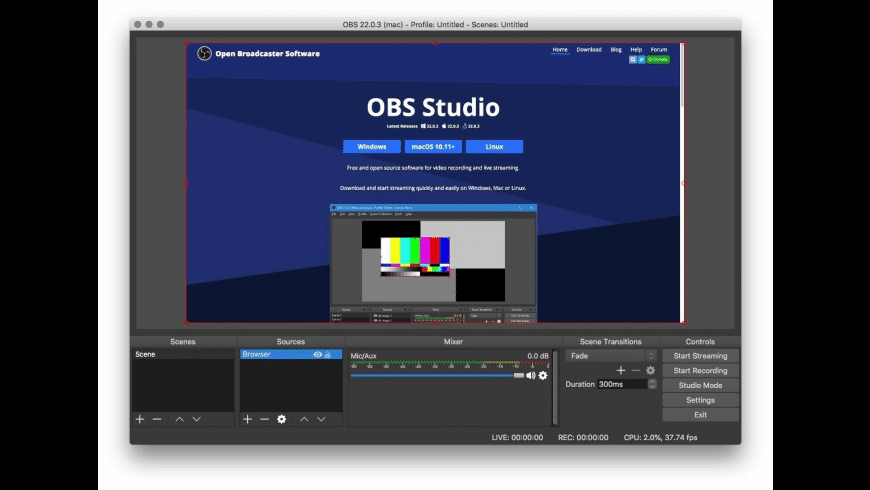

There are some simple tutorials in the Internet that shows how to use Open Broadcaster Software, including more in-depth tutorials designed to cover every aspect of the application. in the middle there is a secondary transition button, allowing for transitioning to the non active scene in the left window using user-defined "quick transitions".

When in Studio Mode, there are 2 canvas preview windows, the left one for modifying and preview of non-active scenes, while the right window is for preview of the live scene ("Preview" and "Program" respectively). The user interface can be switched to a variety of themes, including both dark and light themes, depending on what the user prefers. The upper section has a live video preview, used to monitor and edit the current scene. The control panel has options for starting/stopping a stream or recording, a button to transform OBS to a more professional Studio Mode (see below), a button for opening the settings menu and a button to exit the program. The mixer panel lets the user mute the audio, and adjust the volume through virtual faders, and apply effects by pressing the cogwheel next to the mute button.


Scenes are groups of sources like live and recorded video, text and audio. The main user interface is organized into five sections: scenes, sources, audio mixer, transitions, and controls. Advanced users can choose to use any codecs and containers available in libavcodec / libavformat as well as output the stream to a custom ffmpeg URL. Audio can be encoded using either the MP3 or AAC codecs. įor video encoding, OBS is capable of using the x264 free software library, Intel Quick Sync Video, Nvidia NVENC and the AMD Video Coding Engine to encode video streams into the H.264/MPEG-4 AVC format and the H.265/HEVC format. Transmission of data is primarily done via the Real Time Messaging Protocol (RTMP) and can be sent to any RTMP supporting destination, including many presets for streaming websites such as YouTube,, Instagram and Facebook. مكتوب بلغة C and C++ and Qt, OBS provides real-time source and device capture, scene composition, encoding, recording, and broadcasting.


 0 kommentar(er)
0 kommentar(er)
